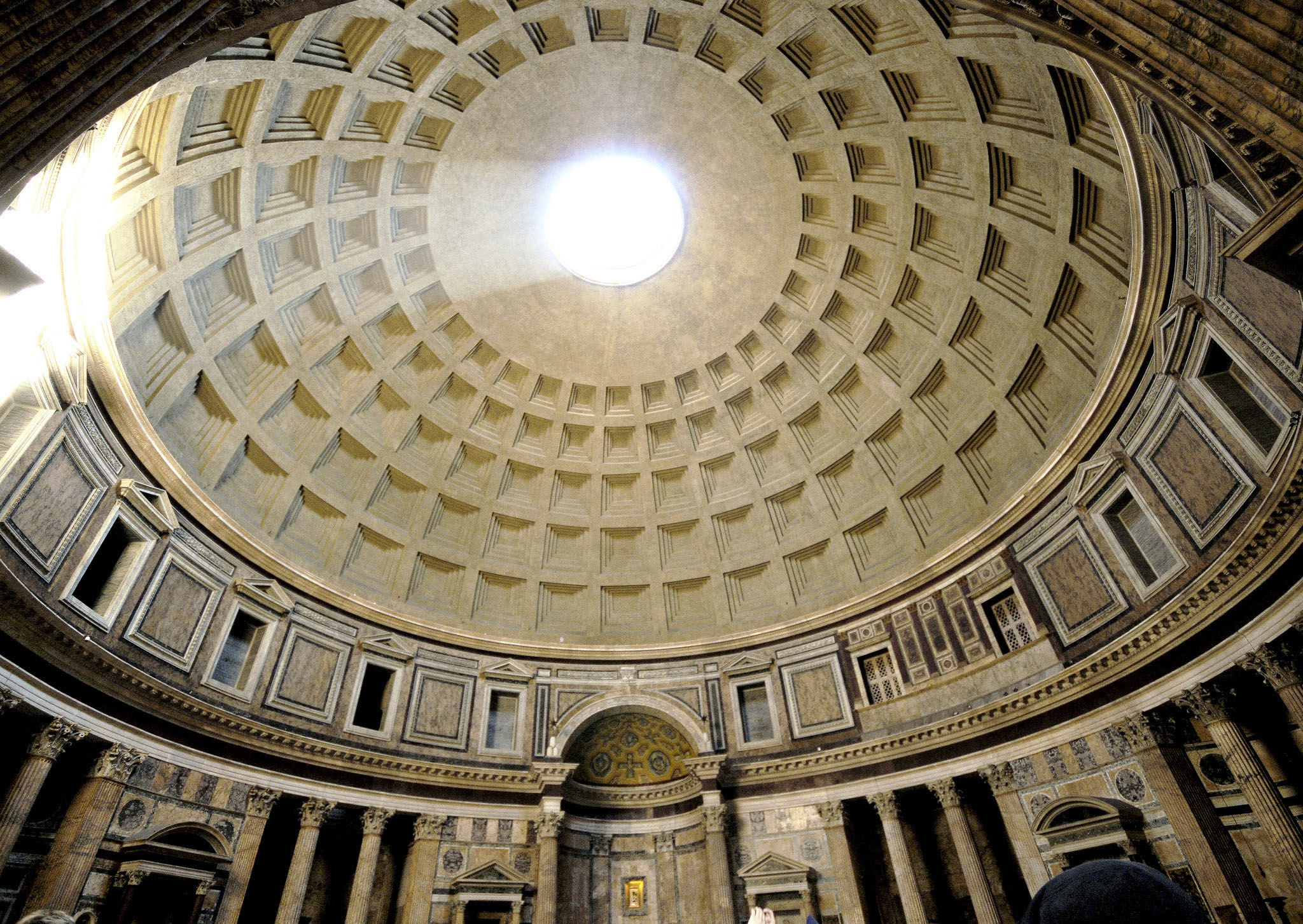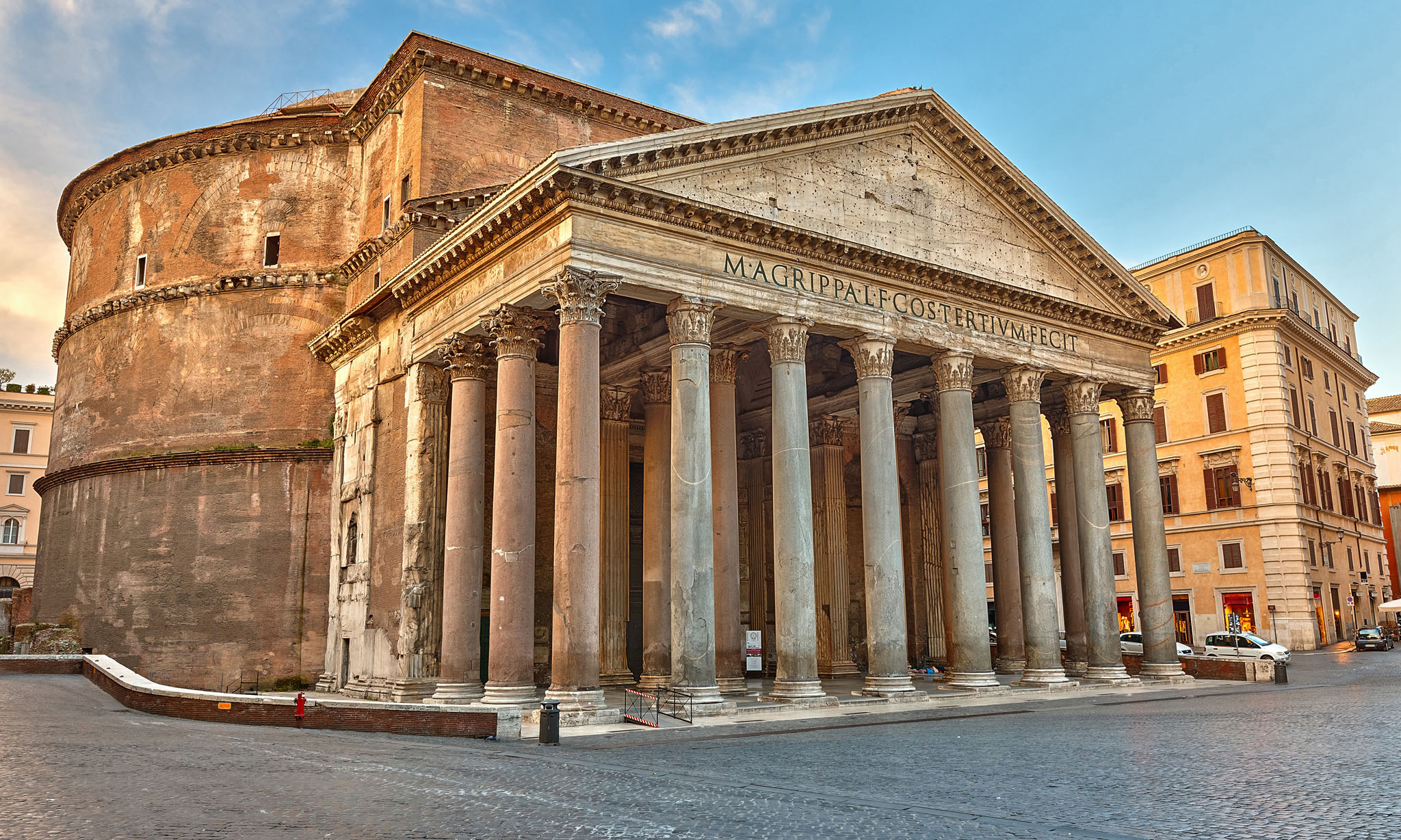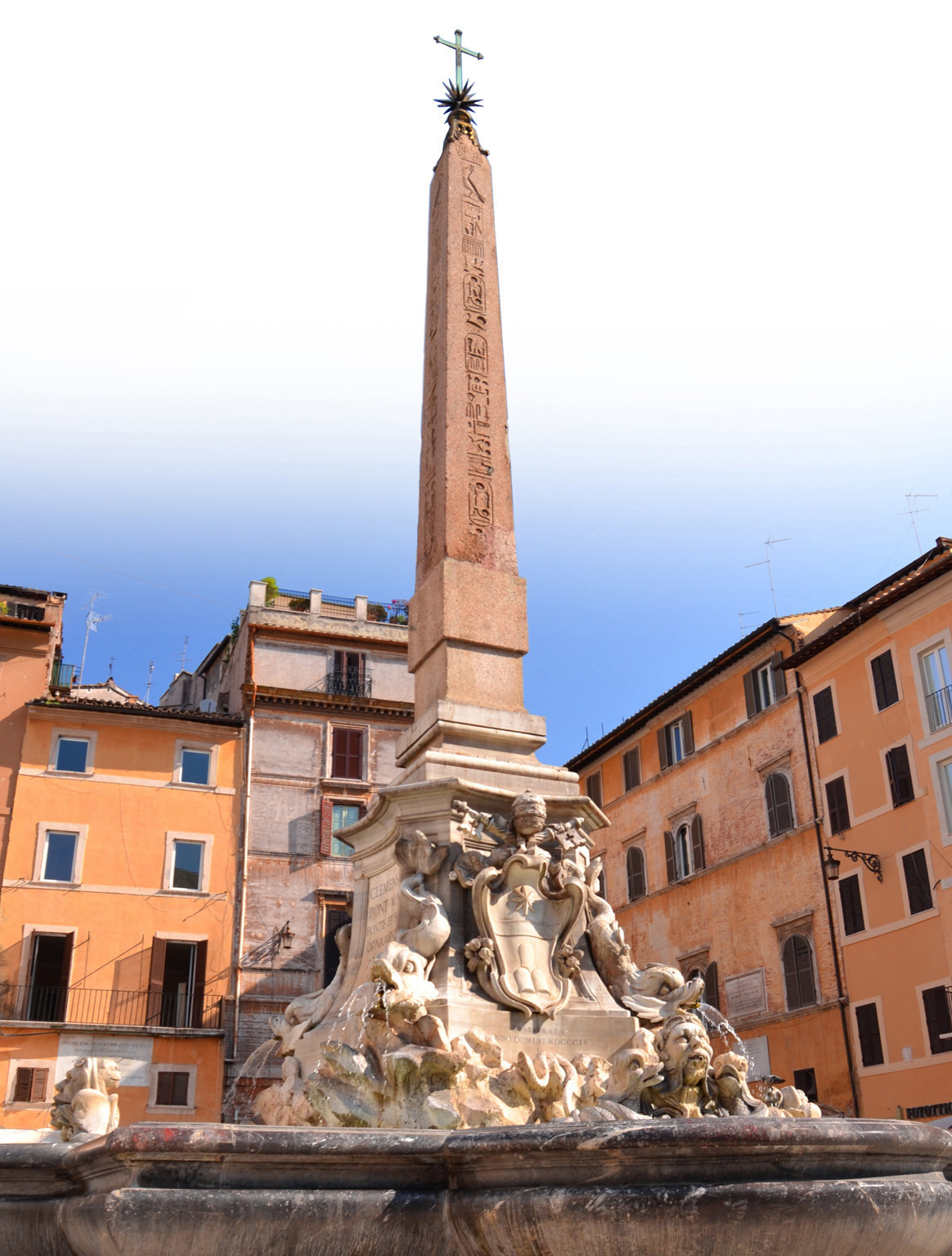
THE PANTHEON
When Emperor Phocas donated this pagan temple to Pope Boniface IV in 608, he unwittingly ensured that one of the marvels of ancient Rome would be preserved unaltered in its new guise as the Christian church of Santa Maria ad Martyres. Designed by Emperor Hadrian in 118–25 CE, it has been lightly sacked over the ages, yet the airy interior and perfect proportions remain: a wonder of the world even in its own time.
NEED TO KNOW
![]() Piazza della Rotonda • 06 6830 0230 • Open 8:30am–7:30pm Mon–Sat, 9am–6pm Sun (9am–1pm during hols); Mass: 10:30am Sun and 5pm Sat; closed Jan 1, May 1, Dec 25
Piazza della Rotonda • 06 6830 0230 • Open 8:30am–7:30pm Mon–Sat, 9am–6pm Sun (9am–1pm during hols); Mass: 10:30am Sun and 5pm Sat; closed Jan 1, May 1, Dec 25
- There’s a good gelateria, Cremeria Monteforte (Via della Rotonda, on the Pantheon’s right flank, and an excellent coffee shop, La Tazza d’Oro (Via degli Orfan), just off the square.
- Rather than bemoan a rainy day in Rome, head to the Pantheon to watch the water fall gracefully though the oculus and spatter on the marble floor and down a drain.
1. Dome
The widest masonry dome in Europe is precisely as high as it is wide: 142 ft (43.3 m). Its airy, coffered space, cleverly shot through with a shaft of sunlight from the oculus, is what lends the Pantheon an ethereal air.
2. Walls
The 20 ft- (6.2 m-) thick walls incorporate built-in brick arches to help distribute the weight downward, relieving the stress of the heavy roof.
3. Royal Tombs
Two of Italy’s kings are honored by simple tombs. Vittorio Emanuele II (1861–78) unified Italy and became its first king. His son, Umberto I, was assassinated in 1900.
4. Oculus
The bold 27 ft (8.3 m) wide hole at the center of the massive dome provides light and structural support: the tension around its ring helps hold the weight of the dome.

5. Portico
The triangular pediment is supported by 16 pink and gray granite columns, all original save the three on the left (17th-century copies).

6. Doors
The massive bronze doors are technically original, but were so extensively renovated under Pope Pius IV (1653) that they have been practically recast.
7. Marble Decorations
Red porphyry, giallo antico, and other ancient marbles grace the interior. More than half the polychrome panels cladding the walls are original, the rest careful reproductions, as is the floor.

8. Fountain
Giacomo della Porta designed this stoop; Leonardo Sormani carved it in 1575. The marble basin was replaced by a stone one and the Egyptian obelisk of Ramses II was added in 1711.

9. Raphael’s Tomb
Raphael, darling of the Renaissance art world but dead at 37, rests in a plain, ancient stone sarcophagus. Poet Bembo’s Latin epitaph says: “Here lies Raphael, whom Nature feared would outdo her while alive, but now that he is gone fears she, too, will die.” Other artists buried here include Baldassare Peruzzi.

10. Basilica of Neptune Remains
Of the Pantheon’s old neighbor, all that remains are an elaborate cornice and fluted columns against the Pantheon’s rear wall.
THE FIRST PANTHEON
Emperor Augustus’s son-in-law, Marcus Agrippa, built the first Pantheon in 27 BCE, replaced in 118-125 CE by Hadrian’s rotunda. The pediment’s inscription, “M. Agrippa cos tertium fecit” (“M. Agrippa made this”) was Hadrian’s modest way of honoring Agrippa. The pediment also provided the illusion of a smaller temple, making the massive space inside even more of a surprise (the Pantheon was originally raised and the dome behind wasn’t visible). Bernini’s “ass ears,” tiny towers he added to the pediment, were removed in 1883.
